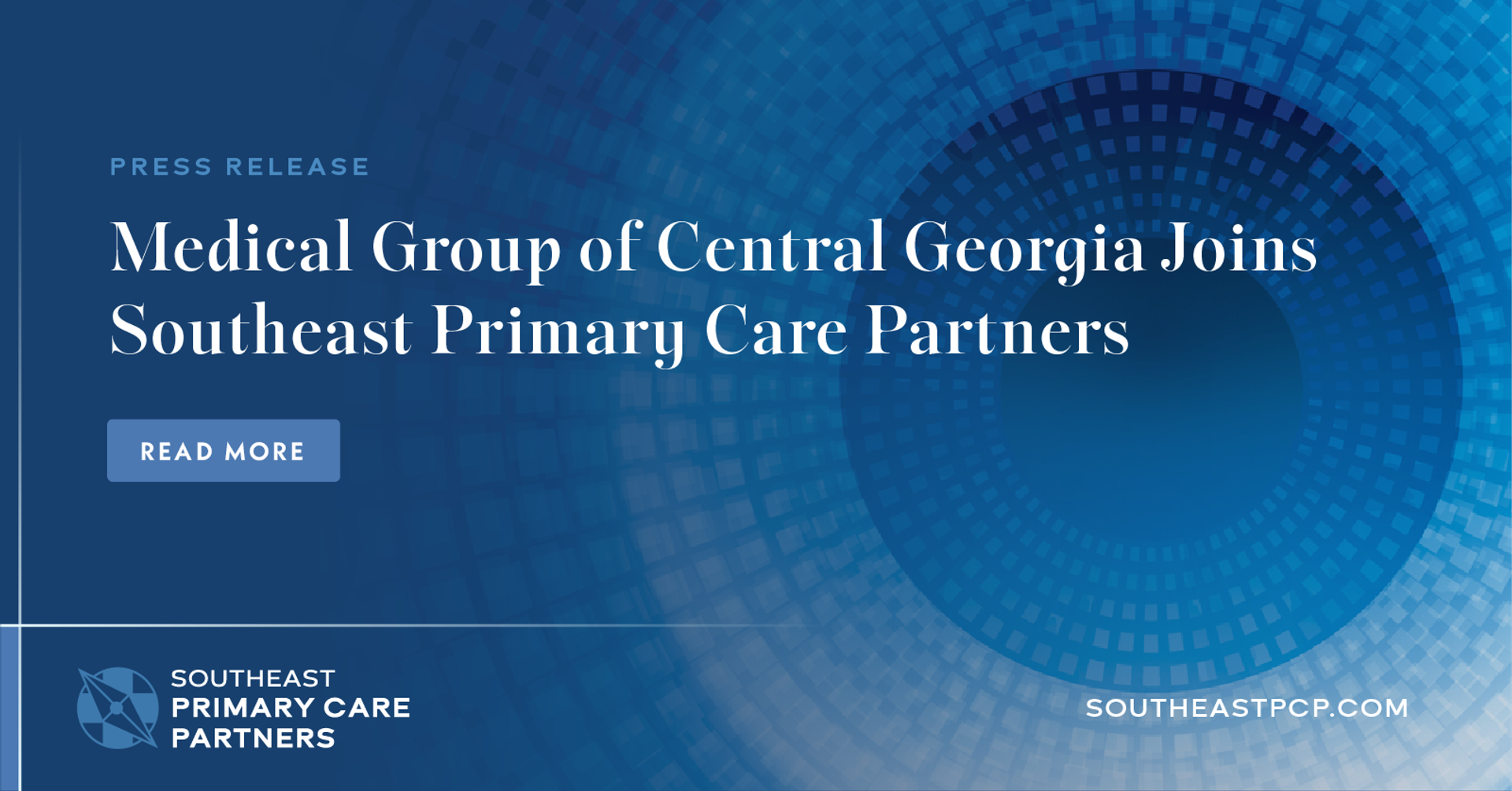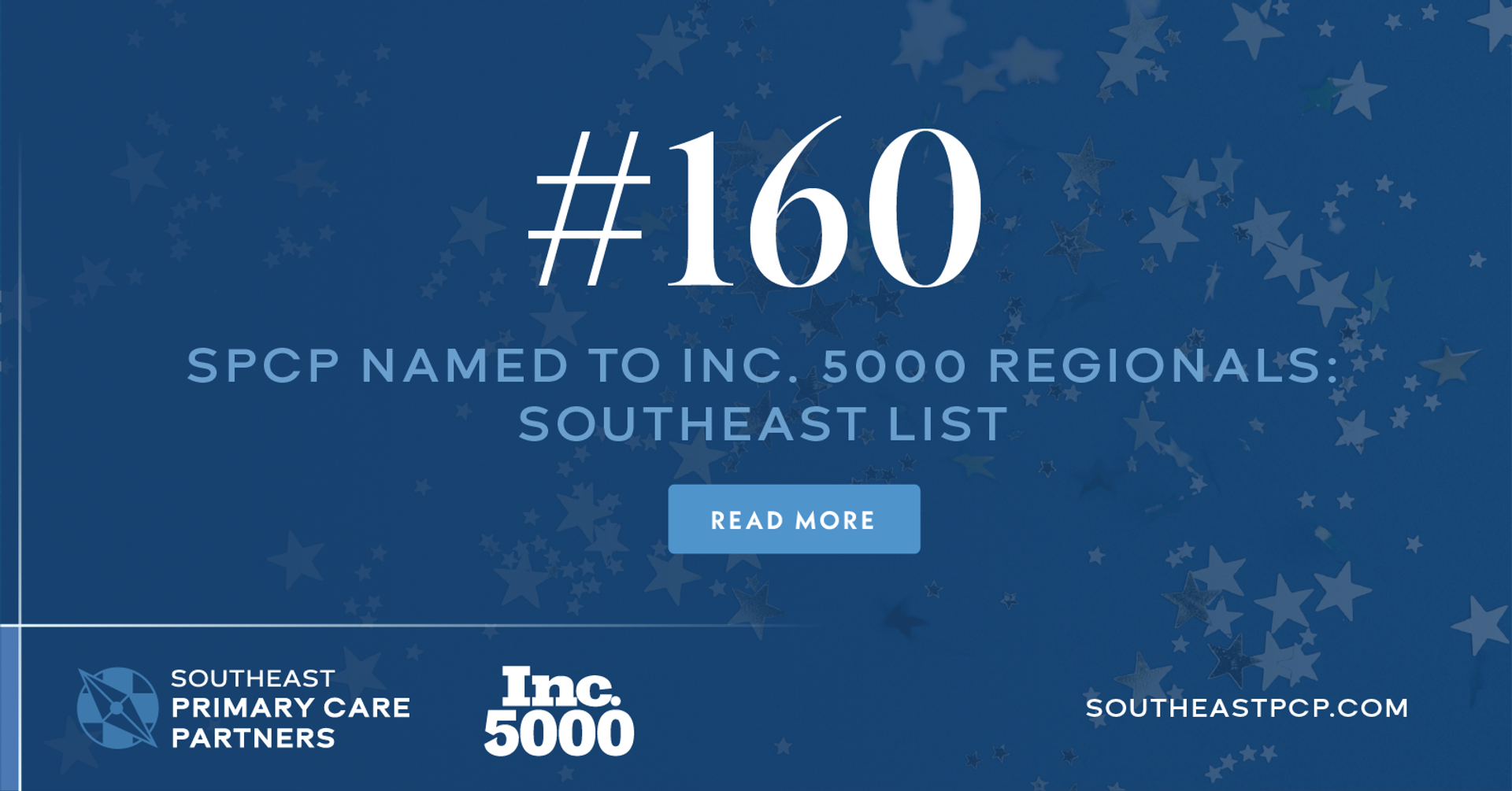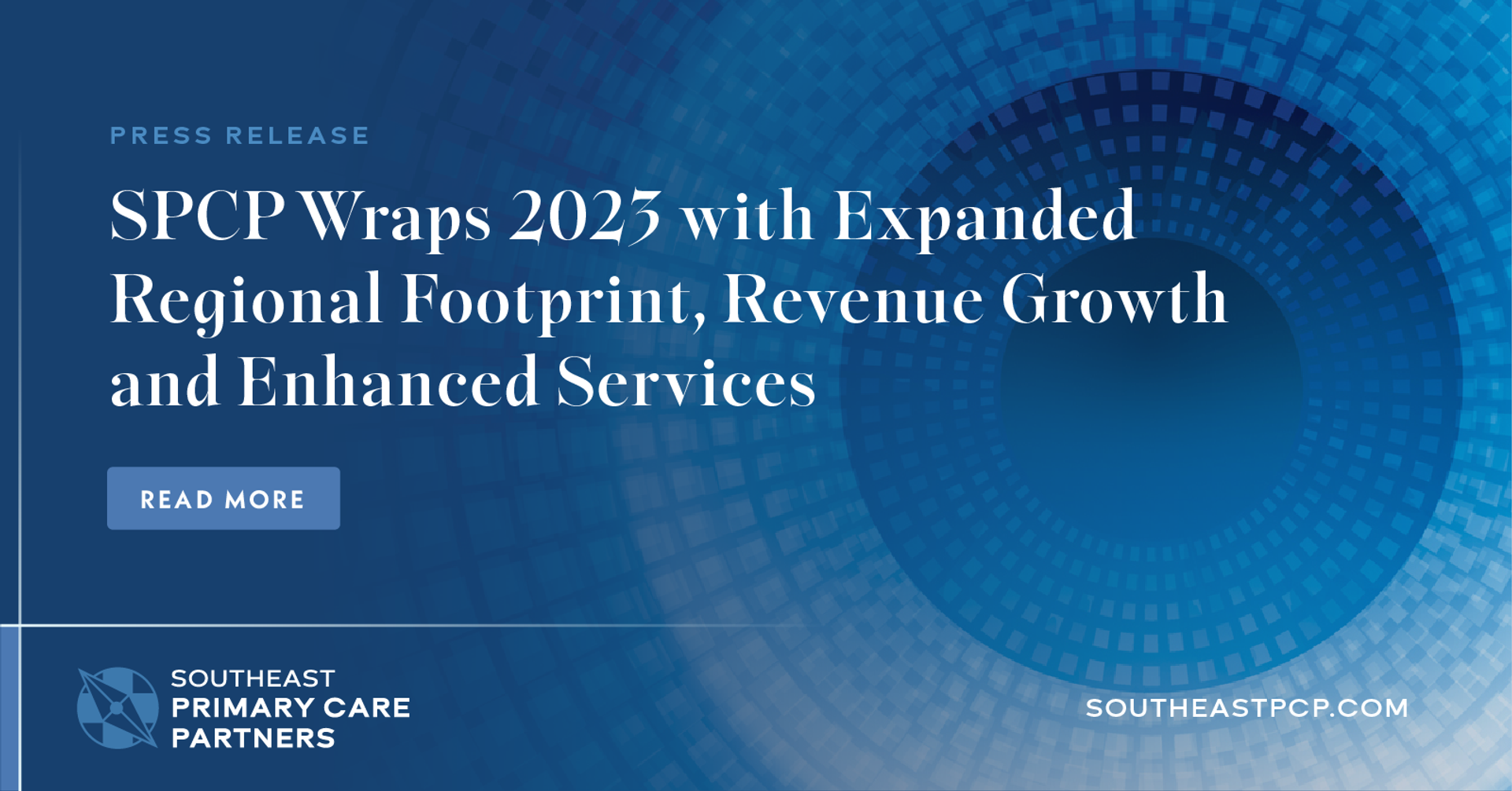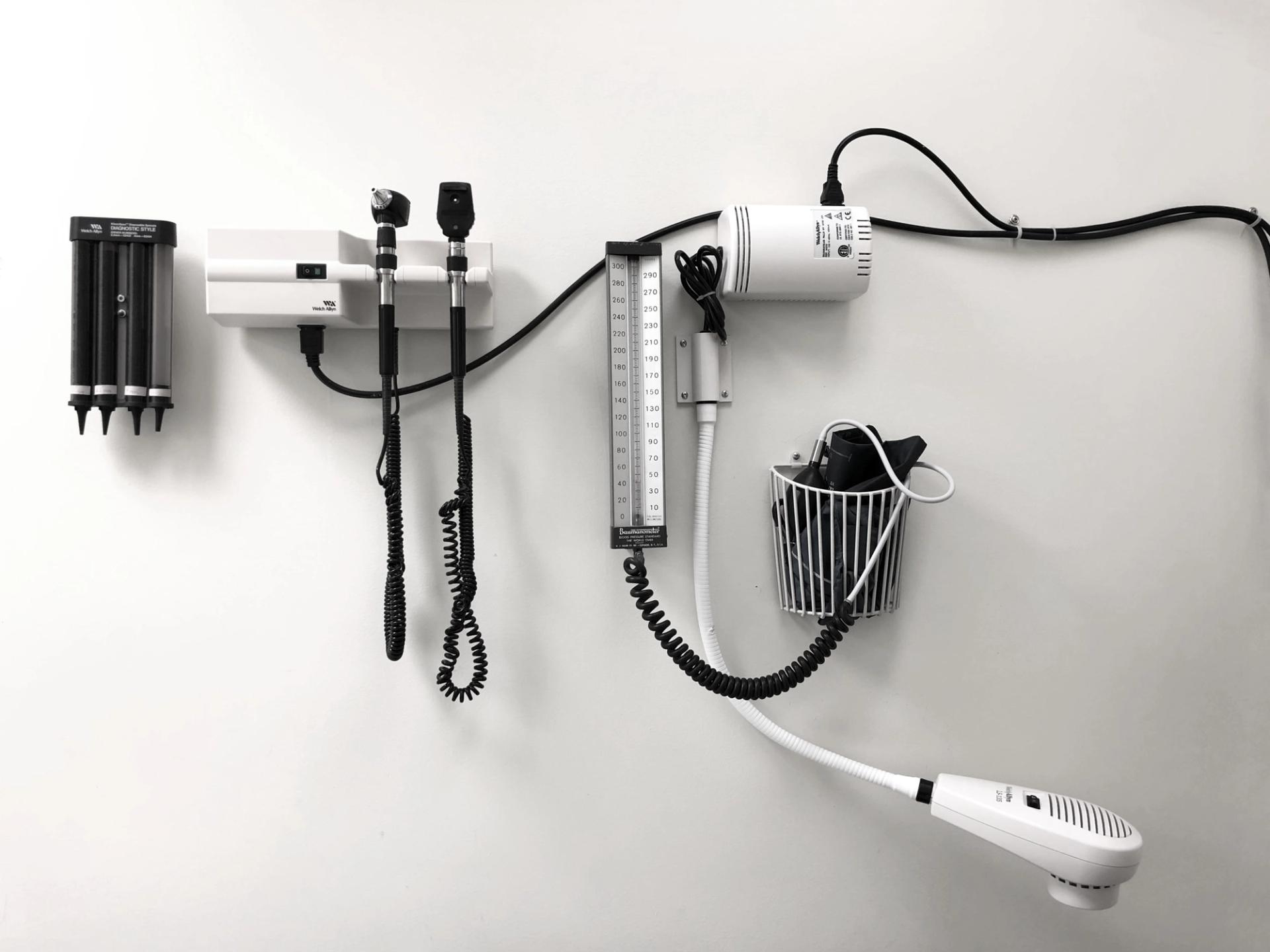
Written by Southeast Primary Care Partners
Balancing Quality Patient Care and Administrative Efficiency
Introduction
Independent primary care physicians are the backbone of community healthcare, yet they face mounting pressure to juggle patient-centered care with the demands of modern medical practice management. Administrative tasks—scheduling, billing, compliance, and electronic health record (EHR) documentation—consume over 40% of a physician’s workday, leaving less time for meaningful patient interactions. This imbalance threatens both care quality and practice sustainability.
The solution lies in adopting strategies that harmonize clinical excellence with operational efficiency. By leveraging healthcare technology solutions, refining workflows, and prioritizing staff empowerment, practices can reclaim time for patient care while maintaining financial health. This guide explores actionable steps to achieve this equilibrium, ensuring your practice thrives without compromising its mission.
For more insights on optimizing independent practices, explore Southeast Primary Care Partners’ resources.
Understanding the Tension Between Care and Administration
The Rising Burden of Administrative Tasks
A 2023 study published in Health Affairs revealed that primary care physicians spend an average of 18.1 hours weekly on EHR data entry alone. This administrative overload stems from several factors:
- Regulatory Complexity: Evolving billing codes (e.g., ICD-11, Medicare requirements)
- Documentation Demands: EHR systems that prioritize compliance over usability
- Patient Expectations: 24/7 portal access, prior authorization requests, and care coordination
These tasks divert attention from critical activities like chronic disease management, preventive care, and building patient trust. The result? Burnout rates exceeding 50% among primary care providers and declining patient satisfaction scores.
The Cost of Imbalance
When administrative inefficiencies overshadow clinical priorities, practices risk:
- Missed Diagnoses: Rushed appointments lead to oversight of subtle symptoms.
- Staff Turnover: Overworked teams become disengaged.
- Financial Leakage: Poor billing practices or denied claims reduce revenue.
To counter this, physicians must rethink workflows through the lens of physician practice optimization - a methodology that aligns daily operations with both care quality and business goals.
Leveraging Technology to Streamline Workflows
The Role of Healthcare Technology Solutions
Intuitive tools can automate repetitive tasks while enhancing care delivery:
- AI-Powered Documentation: Platforms like Nuance Dragon Ambient reduce EHR input time by 50% using voice-to-text automation.
- Automated Prior Authorization: Tools like CoverMyMeds integrate with EHRs to expedite approvals.
- Patient Self-Service Portals: Secure platforms for scheduling, prescription refills, and telehealth reduce front-desk burdens.
For a tailored approach to integrating these tools, visit our Southeast Primary Care Partners Services page.
Optimizing EHR Use: Beyond Basic Data Entry
Most EHR systems are underutilized. To extract maximum value:
- Customize Templates: Align note templates with common visit types (e.g., diabetes follow-ups).
- Delegate Appropriately: Train medical assistants to prep charts and input vital signs.
- Use Analytics: Identify high-risk patients via built-in population health dashboards.
Example: A Midwest clinic reduced charting time by 30% by training staff to flag abnormal lab results in the EHR, allowing physicians to focus on decision-making.
Patient-Centric Strategies to Enhance Quality
Redesigning the Patient Experience
Small changes yield significant improvements:
- Pre-Visit Planning: Send patients pre-appointment questionnaires via the portal to streamline histories.
- Group Visits: Manage chronic conditions like diabetes in shared sessions, saving 30% of provider time.
- Post-Visit Follow-Ups: Use automated SMS to check recovery progress, reducing call volume.
Learn how our Patient Engagement Resources can support these initiatives.
Measuring Patient Outcomes
Track metrics that reflect care quality:
Controlling HbA1c: % of diabetic patients under 7.0
Preventive Screenings: Cancer screening adherence rates
Hospital Readmissions: 30-day readmission rates for chronic conditions
Regular audits ensure alignment with patient care standards while identifying areas for improvement.
Balancing Financial Health with Clinical Priorities
Optimizing Revenue Cycle Management
Ensure billing practices support both efficiency and profitability:
- Automate Claim Scrubbing: Use tools like Waystar to reduce denials by 25%.
- Offer Flexible Payments: Patient financing plans improve collections by 15%.
- Audit Regularly: Identify undercoded or missed charges monthly.
For a deep dive into revenue strategies, contact our Southeast Primary Care Partners team.
Strategic Resource Allocation
Invest in areas that amplify care and efficiency:
- Telehealth Infrastructure: Expands reach and convenience for patients who may struggle to attend in-person appointments.
- Staff Training Programs: Regular training sessions on the latest clinical practices and administrative tasks.
- Quality Improvement Initiatives: Regularly implement new evidence-based practices that enhance patient outcomes.
By strategically allocating resources, practices can improve financial stability while prioritizing patient-centered care.
Measuring Success Through Key Performance Indicators
Clinical Quality Metrics
To ensure ongoing improvement, it is essential to track the following clinical quality metrics:
- Patient Satisfaction Scores: Regularly surveying patients to gauge their experience and identify areas for improvement.
- Clinical Outcome Measures: Monitoring treatment effectiveness and overall patient health outcomes.
- Preventive Care Compliance: Ensuring patients are receiving necessary screenings and immunizations.
- Chronic Disease Management Metrics: Evaluating the management of chronic conditions and how well patients comply with treatment plans.
- Hospital Readmission Rates: Tracking 30-day readmission rates to identify opportunities for better post-discharge planning.
These metrics not only measure the success of practice initiatives but also align with value-based care principles.
Operational Efficiency Metrics
Efficiency is just as critical as quality. Monitor the following operational efficiency metrics:
- Patient Wait Times: Reducing wait times enhances patient satisfaction and increases the number of patients seen each day.
- Schedule Utilization: Effectively managing appointment slots ensures better patient flow and reduced no-show rates.
- Claims Processing Efficiency: Evaluating the time from service provided to payment received can help identify inefficiencies in the billing process.
- Staff Productivity Measures: Regularly assess team members' performance to ensure optimal patient care delivery.
- Cost per Patient Visit: Understanding costs can highlight areas for savings and operational refinement.
Conclusion
Balancing quality patient care with administrative efficiency is an ongoing challenge that requires careful planning, appropriate technology implementation, and strategic partnerships. By following the guidelines and strategies outlined in this comprehensive guide, primary care physicians can create a more sustainable and satisfying practice environment while maintaining the highest standards of patient care.
Ready to Transform Your Practice?
Learn how Southeast Primary Care Partners can help you achieve the perfect balance between administrative efficiency and quality patient care. Our comprehensive support services and strategic partnership options are designed to enhance your practice while maintaining your independence.
More posts

Written by Southeast Primary Care Partners
Technology Integration: Enhancing Patient Care While Maintaining Independence
Technology in Healthcare: Improving Patient Care While Preserving Independence

Written by Southeast Primary Care Partners
Strategic Partnerships: A Smart Choice for Independent Primary Care
Discover why independent primary care practices are opting for strategic partnerships instead of acquisitions. Explore the benefits of maintaining autonomy, enhancing patient care, and achieving financial stability through collaboration.

Written by Southeast Primary Care Partners
The SPCP Difference – highlighting the individuals who advocate for providers and patients: A conversation with Eric Pfleger
The SPCP Difference – highlighting the individuals who advocate for providers and patients: A conversation with Eric Pfleger

Written by Southeast Primary Care Partners
The SPCP Difference – highlighting the individuals who advocate for providers and patients: A conversation with Dr. Danielle Lin
The SPCP Difference – highlighting the individuals who advocate for providers and patients: A conversation with Dr. Danielle Lin

Written by Southeast Primary Care Partners
Southeast Primary Care Partners Expands Geographic Footprint into Tennessee with Addition of Restore Health & Wellness
Southeast Primary Care Partners (SPCP), a primary care-focused medical group dedicated to achieving true value-based care everywhere, today announced its expansion into Tennessee and a new practice partnership with Restore Health & Wellness in Chattanooga. Led by Dr. Tye Young, DO, the primary care practice includes a dedicated team of healthcare professionals committed to providing patients with personalized care that considers a person's unique needs and aspirations.

Passage of Georgia's SafeHaven: Providing Emotional Support for Georgia's Healthcare Workers
Georgia bill passed to provide much-needed emotional support for healthcare workers

Written by Southeast Primary Care Partners
Tiffany Anderson Joins Southeast Primary Care Partners as Senior Vice President of Operations
Skilled Healthcare Operations Leader to Oversee Clinical Efficiency


Written by Southeast Primary Care Partners
Medical Group of Central Georgia Joins Southeast Primary Care Partners
Southeast Primary Care Partners (SPCP), a primary care-focused medical group dedicated to achieving true value-based care everywhere, today announced a new practice partnership with Medical Group of Central Georgia.

Written by Southeast Primary Care Partners
Southeast Primary Care Partners Ranks No. 160 on Inc. Magazine’s List of the Southeast Region’s Fastest-Growing Private Companies
Inc. magazine today revealed that Southeast Primary Care Partners (SPCP) is No. 160 on its fourth annual Inc. 5000 Regionals: Southeast list, the most prestigious ranking of the fastest-growing Southeast private companies, based in South Carolina, Kentucky, Tennessee, Georgia, Arkansas, Alabama, Mississippi, Louisiana, Florida, and Puerto Rico.

Written by Southeast Primary Care Partners
Southeast Primary Care Partners and Emory Healthcare Network align to offer coordinated care
SPCP aligns with EHN to improve patient care coordination.


Written by Craig Worland, Chief Development Officer
Craig's 2024 Industry Predictions
In 2024, there will be a surge of healthcare transactions from companies that would like to sell, but have been waiting on the market to improve. As interest rates peak and begin to fall, we will see a flurry of deals, some possibly below market prices, indicating a shift towards a buyer’s market.


Written by Craig Worland, Chief Development Officer
Craig's Reflections on the 2023 Healthcare Landscape
2023 was an interesting year for healthcare. With the swift rise of AI and its impact on every aspect of the industry to a renewed focus on rural health and the need to prioritize patients at every level, my head was like a swivel keeping up with the stories day to day. In January, I made a few predictions on how healthcare would shift in 2023.

Written by Southeast Primary Care Partners
Southeast Primary Care Partners Wraps 2023 with Expanded Regional Footprint, Revenue Growth and Enhanced Services
Medical Group Continues Rapid Growth in the Southeast, Supporting Primary Care Physicians and Boosting Access to Proactive, Preventive and Community-based Care

Written by Southeast Primary Care Partners
Southeast Primary Care Partners Continues Alabama Expansion, Welcoming Keel & Associates
Primary Care-Focused Medical Group Continues to Improve Access to High-Quality Healthcare in the Southeast

Written by Southeast Primary Care Partners
SPCP's Craig Worland Named to Atlanta Business Chronicle's 40 Under 40
We are thrilled to share that Southeast Primary Care Partners' COO, Craig Worland, has been named to the Atlanta Business Chronicle's 40 Under 40 List!

Written by Southeast Primary Care Partners
Solving the Physician Shortage with International Med Students
Solving the Physician Shortage

Written by Southeast Primary Care Partners

Written by Southeast Primary Care Partners
Southeast Primary Care Partners Continues Alabama Expansion, Welcoming Bear Creek Family Practice
Southeast Primary Care Partners, an Independent Primary Care Supergroup, Continues to Improve Access to Primary Care

Evaluation and Treatment of Low Back Pain in Adults
Evaluation and Treatment of Low Back Pain in Adults


Written by Eric Lisle, Chief Executive Officer, President, Co-founder
America’s Sick Care System: Why We’re Failing and How Independent Primary Care Can Save Us
It’s time to face the harsh truth about healthcare in the United States: our system is failing us.


Written by Eric Lisle, Chief Executive Officer, President, Co-founder
Enhancing Access to Primary Care in Rural Areas: Bridging the Healthcare Gap
Access to primary care is a fundamental aspect of a well-functioning healthcare system. For people living in rural areas, there can be significant challenges in finding and accessing primary care services. Geographical isolation, limited healthcare infrastructure, and a shortage of healthcare professionals are some of the key obstacles faced by those in rural communities. However, with innovative strategies and collaborative efforts, we can work towards improving access to primary care and bridging healthcare gaps in rural areas.


Written by Craig Worland, Chief Development Officer
Reflections on the JP Morgan Nashville Healthcare Leadership Summit
By prioritizing the needs of our primary care physicians and providing them with the support they need, we can attract and retain top talent, leading to better patient care and overall success.

The Future of Physician-Owned Groups in Value-Based Healthcare
Value-based reimbursement will be driven by physician-owned groups that represent true partnerships and integration of practice management with patient care.

Staying Healthy in February: Tips from a Primary Care Physician
Are you struggling to stay healthy this February? Dr. David Hall, a primary care physician, shares his expert tips on how to beat the winter blues.

The Value and Values of the Primary Care Physician
As the healthcare system shifts towards a value-based model, the role of the primary care physician (PCP) has become increasingly important.


Written by Alex L. Hayman, FACHE, CHHR
The Benefits of Joining an Independent Medical Group
... it can be incredibly hard to keep up with the ever-changing landscape of healthcare. Staying up to date with policies, regulations, and technologies is a full-time job.


Written by Alex L. Hayman, FACHE, CHHR


Written by Alex L. Hayman, FACHE, CHHR
Breaking Free from Anxiety: A Guide to Taking Control
Anxiety can make you feel like you're trapped in your own mind, constantly worried and afraid. But don't worry, you're not alone in this battle!


Written by Alex L. Hayman, FACHE, CHHR
Challenges of Owning an Independent Physician Practice
Owning an independent physician practice comes with its own unique set of challenges.


Written by Alex L. Hayman, FACHE, CHHR
Cognitive Migraine Management: My Experience with Aphasia Migraine
My Experience with Aphasia Migraine



